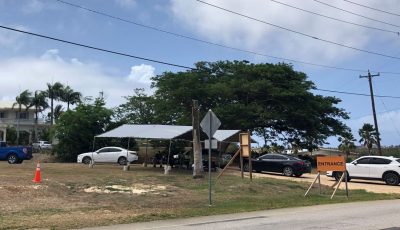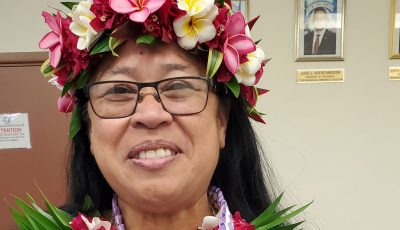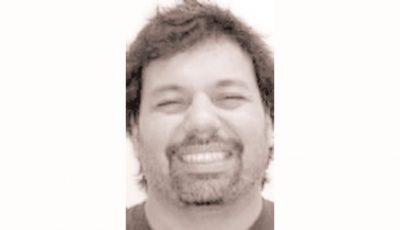Up close and personal with coral reefs
While snorkeling in the waters near the reef off Managaha, I saw the most beautiful sight: fishes swimming around and feeding along the sea floor and among the corals. I thought it was amazing to see a scene like that while at work. My name is Ronnie Cherise Camacho and I am a recent graduate of Kagman High School. I started the Coral Reef Initiative Internship program on June 11, 2012. I was paired up with my mentor, Trey Dunn, a fisheries biologist at the Division of Fish and Wildlife, because of my interest in fisheries. I have been interested in local marine life for a long time. This led me to apply for the CRI internship program to gain first-hand experience and knowledge. I also have a desire to keep our coastal marine life thriving. I decided that the internship program would be a great opportunity to learn more and help our community.
The main goal of my internship is to assist the Fisheries Research Section of DFW with informational brochures for the public. I have chosen to create brochures about several popular fish species that live in our waters. With all the local fishermen depending on fish for food, the brochure will hopefully help them understand the biology and life cycles of some of their favorite fish. The brochures will include my research on the characteristics of each fish, including how big it gets, what it eats, where it lives, and how it is commonly caught. I look forward to including more information as I find out more. I would like to include tips for catching and preparing some of the fish too. If you would like to share any tips on how to catch or cook your favorite fish, please email me at fishtalkpacific@yahoo.com with your name, favorite fish, and tips on catching and cooking. I will include some of your tips in my project brochures.
The internship involves several other aspects as well, including discussion groups at the CRM conference room, Marine Monitoring Team lagoon surveys, and Laolao Bay re-vegetation maintenances. At our fist discussion group, we talked about coral bleaching. We were surprised to learn that corals can be greatly affected by the smallest change in temperature. After our discussion, we had a hands-on activity led by Steve McKagen using Coral Color Reference Cards and pictures of different corals. Although we have so many colors of corals, the reference card has only four colors: green, pink, orange, and brown. With the reference cards and the pictures, we had to compare the color of the coral to the color on the reference card and record the data. We also recorded the type of the coral such as branching, plate, boulder, or soft.
Our first MMT lagoon survey was at the Susupe Beach Park. Our main tools were a quadrat and a 25-meter transect line. The transect line was laid out parallel to shore. The quadrat is a PVC pipe grid that has six points in the middle. We placed the quadrat along each meter of the transect line and recorded the different species of algae found under each point. The most common algae were the Dictyota bartayresiana (brown algae) and Phormidium crosbyanum (blue-green balls). Aside from the algae, sea grass, and sand, we came across a pillow sea urchin, a few sea cucumbers, and a coral.
Our second discussion group was about fisheries. We talked about Marine Protected Areas or MPAs, larval dispersal, and how they both affect the biodiversity of the ocean. The parent fishes in an MPA disperse a significant amount of their eggs into fished areas. By doing so, they expand the biomass in fished areas as well as within the MPA. Human impacts have affected coastal marine ecosystems so the purpose of Marine Protected Areas is to conserve the population of those that live within them.
Our second MMT lagoon survey took place at Pak Pak Beach in San Antonio. There were so many algae and seagrasses around. We not only learned about the different algae there, but also about the sea cucumbers. While snorkeling, I saw so many fishes. I had to view them from a distance but it was incredible. They moved around so fast, I was fascinated just watching them go about.
We have not done the Laolao Bay re-vegetation maintenances yet and still have a few more scheduled discussion groups, as well as underwater cleanups and coral watches conducted by the Mariana Islands Nature Alliance. I’m looking forward to learning even more about our coastal marine environment!
Our work is important because we try to keep our coral reef ecosystems healthy and full of life. With the community’s awareness, we could have a thriving marine ecosystem for future generations and, with fish being a primary source of food, we all need to help keep it that way. Fishing is a lifestyle here for most fishermen. The more damage we cause our corals and fishes, the less we have.





















